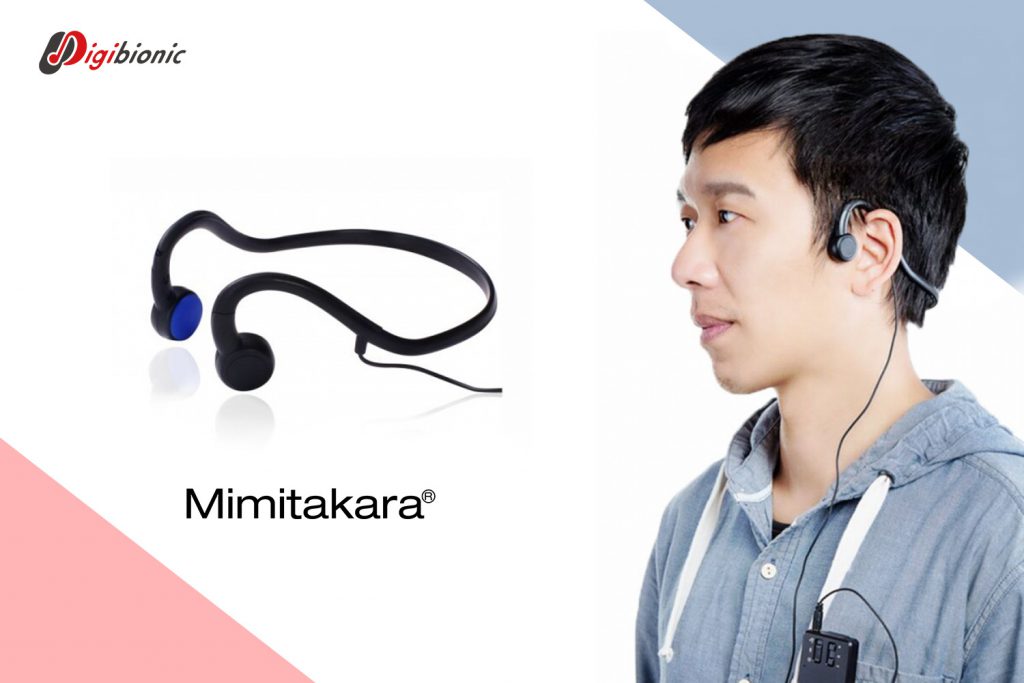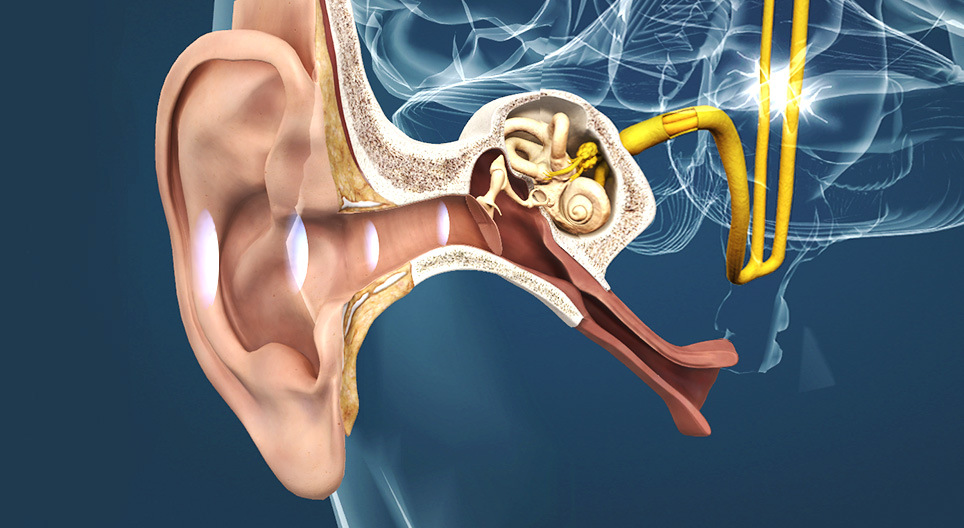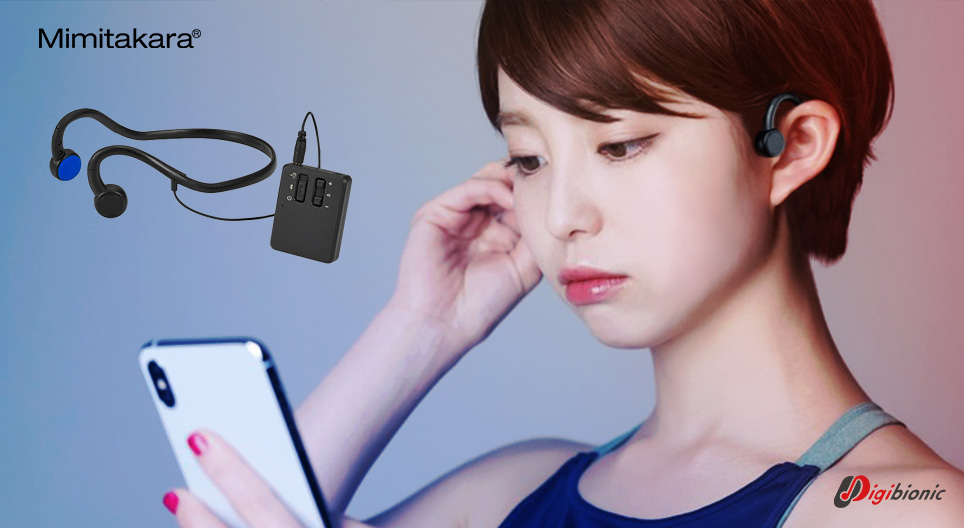
Today, we are going to talk about “bone conduction hearing aids.” Have you ever heard of them? As long as the surface of the hearing aid rests against the ear without being inserted into the ear canal, you can still hear sound.
Let me tell you, there’s nothing wrong! Bone conduction technology, used in bone conduction headphones, was originally applied in medical devices called “bone conduction hearing aids.” Sound waves are transmitted to the cochlea of the inner ear through vibrations of the skull, and then the signals are sent to the brain’s auditory center via the auditory nerve, allowing us to hear sounds.
But you might be wondering, why use a bone conduction hearing aid? How is it different from the regular hearing aids I’m familiar with? Traditional hearing aids amplify sound that enters the ear canal, sending it to the eardrum, right? Are you tricking me?
Drawbacks of traditional hearing aids
Okay, I’m not joking. Traditional hearing aids use air conduction. Sound travels through the air in the ear canal to the eardrum, causing vibrations that produce hearing. The hearing aid is placed outside, in the middle, or inside the outer ear canal to capture, amplify, and send sound to the eardrum. Air conduction hearing aids are divided into two types:
Analog hearing aids: These use traditional amplification. The sound is amplified proportionally to the input, without fine-tuning capabilities.
Digital hearing aids: Require a computer to adjust sound precisely. They can also capture speech and reduce background noise depending on the model and user needs.
However, if the patient’s outer ear canal has a disease or the middle ear’s sound transmission is damaged, traditional air conduction hearing aids cannot transmit sound through the normal pathway, causing problems.
At this point, it’s necessary to amplify sound through alternative pathways to help the patient hear external sounds clearly. Sound doesn’t just travel from the ear canal to the eardrum to the brain through the air, right?
No! Have you noticed that when we cover our ears, we can still hear some external sounds?
In reality, sound not only travels through the ear canal but can also reach the cochlea in the inner ear through vibrations of the temporal bone in the skull. This is the fundamental principle of bone conduction hearing aids.
The emergence of bone conduction hearing aids
According to hospital references, bone conduction hearing aids can be implanted (similar but not identical to electronic ears) and are known as Bone Anchored Hearing Aids (BAHA). These devices are surgically implanted with titanium to transmit sound through the skull.
This type of hearing aid bypasses the air conduction structures, such as the outer ear canal, middle ear, and ear bones, making it ideal for patients with blocked outer ear canals or damaged middle ear structures.

The main structure of the human body responsible for receiving sound is the ear, which functions to generate hearing in the cerebral cortex. However, isn’t it fascinating that sound is transmitted through a medium as mechanical waves (sound waves), and the brain needs to receive electrical signals from the nervous system to create the perception of sound?
How are mechanical waves and electrical signals converted in our marvelous auditory system?
Simply put, the hair cells in our inner ear handle this process. The human ear is divided into the outer ear, middle ear, and inner ear. Sound waves (mechanical waves) travel through the outer ear canal and pass through the eardrum between the outer and middle ear. The eardrum vibrates in response to the sound and drives the ossicular chain in the middle ear to transmit vibrations to the inner ear.
The part of the inner ear that detects these sound vibrations is the cochlea, which is filled with endolymph fluid, and the hair cells are submerged within this fluid.
When vibrations from the ossicular chain (malleus, incus, stapes) reach the cochlea, the endolymph fluid is displaced. The hair cells vibrate in response, stimulating the connected nerve endings to generate nerve impulses (electrical signals). When these electrical signals travel to the brain via the auditory nerve, we perceive them as sound.

Actually, this type of design is quite common. Traditional methods cannot deliver the desired results due to interference from other external factors. Therefore, we have tried to explore whether alternative second or third routes can achieve the same outcome. Even if the routes used are different and the costs vary, as long as the results are good, it is considered a valid approach.
Just like when we use regular transportation services: if the road ahead is heavily congested, we might choose the train or another mode of transport that can reach the destination more conveniently.
Similarly, in sound conduction, if the primary air conduction method is blocked, “bone conduction” provides another way for people with hearing impairments to use a “bone conduction hearing aid” to perceive external sounds.
This time, we will focus mainly on the topic of “bone conduction hearing aids” because we want to relate it to current developments. In reality, bone conduction hearing aids are not extraordinary in terms of mechanism—they still rely on the body’s natural way of transmitting sound to achieve hearing effects. Sound can travel through solids, liquids, and gases, and the same applies to the ear. Ultimately, the mechanical waves of sound are transmitted to the cochlea deep inside our ear. However, the method of signal transmission during the process is not strictly regulated. It can be transmitted via vibrations of the temporal bone or through air vibrations in the external ear canal.
In the end, the only difference lies in the perspective of sound clarity and volume between the two methods.
“Bone conduction hearing aids” continue to hold a share in the market because they cater to a specific target group.
Moreover, with the advent of this medical device, patients with chronic external otitis, middle ear infections, congenital or acquired conductive hearing loss, and even single-sided deafness can enjoy the convenience of hearing again.
If you do not have congenital ear canal obstruction or deafness but experience hearing loss that affects daily life, you can use air conduction hearing aids. Air conduction hearing aids allow fine adjustment of sound at different frequencies. Choosing the right hearing aid for you can help you listen, communicate, and improve daily life efficiency.
So why do hospitals and hearing centers recommend air conduction hearing aids?
Because air conduction hearing aids are smaller, offer a better listening experience, improved sound quality, and clearer audio. Especially for elderly patients with severe hearing loss, they can use hearing aids with earmolds to fully seal the ear and enhance the listening experience.
Let people experience the beauty of hearing aids and hear the sounds of their family’s love once again.
If you wish to share that love with Digibionic, please contact us…

เราใช้คุกกี้เพื่อพัฒนาประสิทธิภาพ และประสบการณ์ที่ดีในการใช้เว็บไซต์ของคุณ คุณสามารถศึกษารายละเอียดได้ที่ นโยบายความเป็นส่วนตัว และสามารถจัดการความเป็นส่วนตัวเองได้ของคุณได้เองโดยคลิกที่ ตั้งค่า